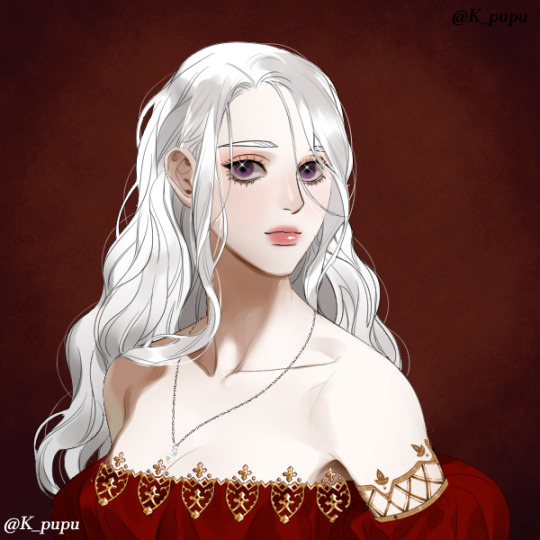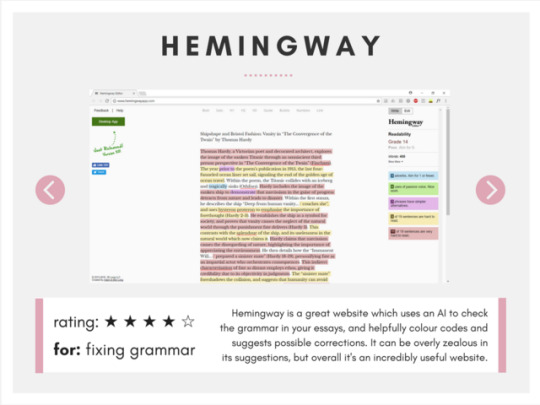Text














upstream, mary oliver;
gravity and grace, simone weil;
journal of a solitude, may sarton
inspired by morallyambiguous’ post
923 notes
·
View notes
Note
I don't know if this is the correct blog or another one of yours for this question. My question is: How do I come up with fantasy animals and plants? Like in video games for example? I can never get creative when it comes to these two things
Writing Ideas: Fantasy Animals & Plants
How to Create Fantasy Creatures/Animals
Writing Worksheet: Fictional Plants
Yup, this is the right blog, haha. Here are some tips to create fantasy creatures/animals from different sources, and a worksheet to help guide you in creating fictional plants, which you can add fantasy elements into. And below are some additional references for inspiration. Choose which ones you prefer to incorporate in your story to help create your fantasy animal/plant:
Types of Animals ⚜ List of Legendary Beasts & Monsters
Word List: Animals (1) (2) ⚜ Animal Adjectives ⚜ Birds
Flightless Birds ⚜ Fantasy Creatures ⚜ Fictional Monster
Fantasy Character Names ⚜ Medieval Beasts (1) (2)
Medieval Plants ⚜ Medicinal Herbs ⚜ Meat-Eating Plants
Poisonous Plants ⚜ Poison Ivy & Poison Oak ⚜ Roses
Shade-Loving Plants ⚜ List of Flowers ⚜ Flower Remedies
Some Ecology Vocabulary
Resources on Creature Design (Wildlife Fact Sheet)
World-Building Template (with sections on flora and fauna)
After choosing your preferred animals/plants to use as inspiration, it is advisable to research more on them for added historical/cultural context if they would be appropriate for your specific story. Hope this helps with your writing!
499 notes
·
View notes
Text
bnha headcanons: present mic
Here's a list of headcanons for Yamada Hizashi - Present Mic I've never used and never will, but I don't want to leave them sitting on the shelf:
Present Mic is part of the punk scene. He discovered the genre at some point in high school and simply decided to adapt his whole style to it. Cue the sickening amount of leather and combat/plataform boots in his wardrobe.
He has at least two battle vests that he customized himself and one that he modified to use with his hero-suit; and a huge collection of buttons that make reference to the punk scene of the pre-quirk era.
After graduating from U.A., Hizashi was the lead singer of a punk band for a few years before retiring from his career due to his inability to consolidate his hero work and his hangover after gigs.
He and his band had some success in the alternative scene and sold a few hundred albums, but they never made the popular music charts or played concerts in large stadiums, even though he was a well-known hero.
Present Mic's most precious and rare hero merchandise is actually his band albums or photos from his time as lead singer. The teachers at the U.A each have a copy of one of his signed albums - yes, even Nedzu.
Nemuri has at least two photo albums full of pictures of Mic drunk, half-naked or being arrested during the only tour his band has ever done.
A little extra:
The only ones who seem to know about Present Mic's "dark past" from class 1-A are Midoriya (obsessed with heroes, duh) and Jirou (her parents are fans of the band and are one of the lucky few who have managed to get their hands on one of his albums).
13 notes
·
View notes
Text
A Wild Battinson (Social Media AU)
MASTERLIST
Part 1 — Temporary Baby Acquisition
Part 2 — HE POUT ????
Part 3 — The Babygirl Agenda: Origins
Part 4 — Stuck in a Bookstore
Part 5 — Dior Bruce Wayne Supremacy
Part 6 — Please Sleep
Part 7 — GALA UNDER ATTACK
Part 8 — Stuck in an Elevator
Part 9 — Bruce Wayne is scared of bats?!
Part 10 — Lex Comes to Town
Part 11 — HIT THE DECK
Part 12 — Career Day in Gotham
Part 13 — Bruce Wayne is GAY????
Part 14 — The 30th Annual Wayne Business Convention
Part 15 — Monday: Puppies!!
Part 16 — Tuesday: Protecc Him
Part 17 — Wednesday: Crafts
Part 18 — Thursday: KIDNAPPED
Part 19 — Friday: The Seminar
Part 20 — Gotham's True Cryptid
Part 21 — Temporary Baby Acquisition II
Part 22 — Valentine's Day <3
Part 23 — "I'm used to it"
Part 24 — Weird Bruce Wayne Pics
Part 25 — Permanent Baby Acquisition
Part 26 — Richard "Dick" Grayson
Part 27 — Who's Batman?
Part 28 — A Baby!!!!
Part 29 — Magical Girl Bruce
Part 30 — A Kid on the Roof
Part 31 — Grounded
Part 32 — Bruce Wayne doesn't blink?!
Part 33 — Gotham Bingo Cards
Part 34 — A Secret Third Thing
Part 35 — Q&A with Bruce Wayne
Updates Once a Week :)
To join the tag list, please DM me or leave a reply here!



9K notes
·
View notes
Text

Daella Targaryen, second child born to King Viserys Targaryen, First of His Name, with Queen Aemma Arryn, his consort and cousin-wife. Born in the year 92 A.C, Daella was supposed to have a twin brother, but the baby did not survive the birth, which led to her being known as the “Half-Dragon Princess” by the Realm.
She was named after the mother of Queen Aemma who was also the sixth born daughter of King Jaehaerys I Targaryen, the Old King, with his sister-wife Alysanne Targaryen, the Good Queen.
Possessing the common characteristics of a Targaryen — silver hair and purple eyes — Daella did not possess the same striking beauty as her sister, Rhaenyra, but neither could she be called plain. Described as having soft features, with gentle (almost sad) eyes and fair-complexion, Daella was a small woman, slim of waist and slight of frame, and had a pleasing voice and sweet smile.
According to the testimonies of bards, jesters and nobles of King Viserys' court, Princess Daella was known to have a gentle temperament compared to other Targaryens of the time, such as her older sister, Princess Rhaenyra Targaryen, and uncle, Prince Daemon Targaryen. The princess was described as courteous and biddable, with a quick-witted personality and sharp mind.
Beloved by the smallfolk, Princess Daella was known for her charities and projects in order to continue the legacy of her great-grandmother, the Good Queen Alysanne, by helping to improve the living conditions of the lowborn and the woman of the realm. As a princess, she did not have the power to hold a women's court, but she often visited open squares, orphanages and clinics for the smallfolk, where she spent hours listening and learning from the women.
Rider of Grey Ghost, Daella was known as the only Targaryen to tame one of the wild dragons of Dragonmount. She was two and ten when she succeeded. There are contradictions as to the historical accounts of how the Princess became the rider of the wild dragon, but the most accepted theory is that, on one of her visits to Dragonstone, the Princess went in search of the dragon in order to ride it, ceasing to be the only Targaryen (apart from the King and Queen) without a dragon.
#house of the dragon#hotd oc#targaryen oc#house targaryen#oc: daella targaryen#piccrew#rhaenyra targaryen#viserys targaryen#aemma arryn#daemon targeryan
23 notes
·
View notes
Note
Hey I absolutely adore your Indian James headcanons can you do some for Harry too please <33
Okay this got too long so it's only Harry's first year at Hogwarts. At some point I might do the rest of his years but yeah. Here you go, i hope you like it :)
The first time Harry noticed his skin was darker than the people on Privet Drive was when he was four. The first time he noticed people sneered at him for it was when he was five and a half. He didn't understand it; why did they think the colour of his skin meant that he was inferior to them? He heard the words chee-chee and brownie thrown around like Dudley threw his food, and quietly pulled his shirt tighter around himself.
When Harry is eight, Dudley and his gang throw him in a ditch and throw dirt and soil on him till he's coughing and tears are running down his face. "You blend right into the mud," Piers laughs at him. The next day, the boy turns up to school with black skin. Harry sits in the corner and turns his face away, a secret grin playing on his lips.
He comes to Hogwarts, and there are so many colours. He is approached by Parvati on the second night, and she asks him if he's excited for Ganpati Chaturthi. He stares at her, and then says, "I'm sorry, but I don't know what that is." She gets offended, but they haltingly talk it out, awkward and stilted like most eleven year olds. When she realises that he's been kept from his heritage and his magic, she flies off the rails with anger. "That's it," she says, "we're friends now. No arguments."
Harry loves talking to Parvati. She's the one that tells him his father was from India. She's the one that tells him the names of his grandparents, that tells him of the importance of heritage in the magical world. They talk about religion and food and all sorts of things, and within two weeks Harry is asking her to teach him Marathi. It's hard at first; the grammar structure is more like French than English, the alphabet sequence is weird and complicated and has too many letters, but he keeps practising his svar and vyanjana and kana and matra. He will do this, he tells himself. (He doesn't tell Ron. He wants this for himself, he thinks. His family, his heritage. He wants to learn before he shares, and so he doesn't tell Ron. For now. He will, when he knows enough.)
Slowly, he starts talking to other Indian kids at Hogwarts. Padma, a seventh year Slytherin named Aarzoo who's Muslim and always has the prettiest hijabs, Gryffindor Kalyani from fourth year and Hufflepuff Rushabh from the third. Kalyani is from Maharashtra just like the Patil twins and Harry, Rushabh is from Gujarat and Aarzoo from Punjab. Harry finds it fascinating that India has so many different cultures and religions, and demands knowledge from them. Aarzoo laughs, and tells him he should have been with the 'Claws.
Harry disagrees. He was supposed to be in Slytherin, he knows, but he is in Gryffindor, where his family had been. His family had been Indian. He wants to know everything about it. If he couldn't have his parents, he would have that which had been a major part of his father's life. And so he reads and observes and studies and asks questions— hesitating at first in case they yell at him (Aunt Petunia hated questions and he feared these people would be the same), but slowly he asks more and more. He talks for hours with Kalyani and Rushabh, and they tell him about Garba and Dhol Tasha, Ganpati Chaturthi and Diwali, Eid and Gudi Padwa. They talk about the languages of India, and Harry immediately asks Aarzoo to teach him Urdu and Hindi. She laughs, and says he should focus on Marathi first. He pouts, but nods.
The Mirror of Erised shows him his father, and he can't take his eyes off. James Potter is a tall man, bulky frame covered in muscles and warm brown skin that seems to glow with happiness. His eyes are light brown, and the bold black lines drawn under them make the green specks stand out. He's dressed in what Harry knows is called a kurta, white and gold threads woven to form images of peacocks and elephants and other intricate designs. The next day, Harry asks Padma what she lines her eyes with, and she promptly hands him a little round metal box and a tiny wooden stick. "It's called kajal." She tells him the differences in pronunciation between Hindi and Marathi, and shows him how to apply it. Harry wears it everyday. It makes his eyes look bright, brighter than they already are, and he falls in love with it. Kalyani presses a kajal covered finger behind his ear every morning. "For good luck," she tells him, a grin playing on her pretty lips. Harry flushes, and smiles back shyly.
For Christmas, Aarzoo gives him perfume. It's chandan and mogra with hints of rose, she says, "and your grandfather made it. His name was Fleamont Henry Potter, and he was an exceptionally talented potioneer." Harry wears it religiously. Padma and Parvati band together and get him books on the Potter family and their historical importance, and he almost cries. Rushabh promises to teach him how to play Garba, and Kalyani gives him a cookbook for everyday Indian foods— breakfast and lunch and a few fancy stuff. Harry hugs it to his chest and thanks her with shining eyes. (he may have a bit of a crush on her. He can't help it— she's really smart, and she's pretty.)
Throughout the year, all of them work to introduce him to Indian food. At first, he thinks it will be easy. It is not. There is no such cuisine named Indian, Parvati tells him sternly. There is Punjabi, South Indian, Mughlai, Maharashtrian, North Indian, Bihari, Bengali and so many more. "The food in India changes with every twenty kilometres of travel," Aarzoo says when he mock complains about it. "It's never the same, and that's what makes it so special." He agrees.
The end of the year arrives, and Harry is still weak from his tryst down the trapdoor. When Ron and Hermione aren't present, his friends from home (because that's what India is, isn't it? His home. The home he never got to see, but is no less a part of him.) crowd around his hospital bed and have long talks with him, filled with banter and laughter. His Marathi is so much better now than it was in September, and he blushes when Kalyani compliments him on it. Rushabh winks at him, and Harry throws a pillow at him, feeling the blood rush to his cheeks at being caught out.
On the last day of school, he hugs Aarzoo around the waist and cries into her stomach. It's the first time he calls her "Aarzoo Tai", and she smiles widely, her own eyes dripping tears. "You will write," she says sternly, "okay? This might be the end of my Hogwarts years, but you are my little brother." He cries harder and nods, refuses to let go until the very last minute.
Harry goes back to Privet Drive with a heavy heart and a proud smile. He isn't inferior to the people there, he knows. He's special. He's Indian. He's James Potter's son, and he's going to live up to it.
760 notes
·
View notes
Text
James Potter is a mother hen.
James Potter is the kind of hunky but gentle giant kinda of guy who will tackle you lovingly into bed when you're sick and bring you hot, homemade soup and a sweet treat as a reward for taking all your potions.
James Potter is the type who has all his friends' mothers (except Walburga) on speed dial (or flu-dial, idk), who exchanges letters with these mothers once a week about "the kids" but never says what kind of trouble they're causing because that would be self-incriminating and he's not that stupid.
James Potter is the guy in the group of friends with the healthiest habits. He is the friend who at the end of a night of drinking will guides everyone to their beds and who listens to the drunken grumblings of Sirius and Peter with genuine interest. Who controls the amount of cigarettes Remus smokes in a week and who locks up Marlene's broom whenever she gets too obsessed with Quidditch and ends up overworking herself to the point of exhaustion.
James Potter is the type who, had there not been a war to fight, would have pursued a career as a Healer or become a full-time househusband to raise Harry, because 1) he's rich enough to don't need to work and 2) he is one of the genuinely lucky few to have been raised in a loving family and so he grew up knowing that looking after his family always comes as a priority.
So when they say James Potter cares too much, they mean this.
60 notes
·
View notes
Text

More often than not I’ll crack into a sprawling fantasy series and, while I appreciate the luscious descriptions of furniture, landscapes, and clothing, all I’m focused on is that I don’t actually know how this world works. I only know what it looks like.
Including some functionality to your universe can add to immersion and give your reader a strong foundation on which to build their mental model of your universe.
You certainly don’t need to use all of these questions! In fact, I recommend against that, as all of these certainly won’t make it into your final draft. I personally find that starting my worldbuilding off with 5 to 10 functional questions helps pave the way for glittery and elaborate aesthetic development later on.

How is the healthcare funded in your world?
How does healthcare functionally differ between the wealthy and the poor? (i.e. can only the wealthy go to hospitals? do poor families often have to rely on back-alley procedures?)
Where are health centers (i.e. hospitals, small clinics, etc.) organized in your cities?
Does it differ in smaller towns?
How does this affect people’s ability to get healthcare?
Is healthcare magical, and if it is, how does that affect the healthcare system?
If healing is instantaneous, how does that affect people’s views on injury, illness, and chronic ailments?
If you have both magical and physical healthcare, which one is deemed superior and how does that affect society?
What illnesses are common in your world?
How does this affect daily life?
What do the people in your world think illnesses are?
Is it a miasma theory?
Humor theory?
Demons?
Do they know about biological viruses and bacteria?
How does this affect healthcare?

How do people get water?
Is the water sanitary and if not, how do they sanitize it?
How does agriculture work?
Is it large corporations or individual farms?
What sort of agricultural technology exists in your world and how does it affect food production?
Are farmers wealthy or poor?
What sort of natural resources does your world/country(ies) have and how are they obtained?
How does this affect the average wealth of the country?
How does this wealth affect the culture?
What livestock or beasts of burden are most valued? Least valued? Why?
What is considered a luxury good vs. a regular good?

What forms of transportation does your world have?
What classes use what forms of transportation?
How far has the average citizen traveled, given your transportation limitations?
Which cities are the most accessible and which are the least? Why?
How do popular transportation methods change how cities/towns are laid out?
Does your world have public transportation? What is it?
Is there a coming-of-age aspect to travel?
Describe your world’s postal system or whatever equivalent there is.
Who pays for it?
How reliable is it?
Are there emergency methods for transporting information?

How does your world keep time (i.e. watches, sundials, water clock, etc.)?
Does your world have a currency system, barter system, or something else?
If you have multiple countries, do different currencies have different values across said countries?
How does this affect travel?
Do you have banks in your world and if so, how are they run?
Who owns the banks? Government? Wealthy? How does this affect the economy and/or class system?
How does credit operate in your universe?
Does your world operate more on big corporations or small business? Something in between?
How are workers/labourers treated in your world?
Are there workers unions and if so, what are common views on unions?
Describe your tax system. If you don’t have a tax system, explain why and how your world is affected by that.
Can certain social classes not own property, certain livestock, certain businesses, etc.? Why?
How are business records kept? Are business records kept?
If your world has technology, does your world prioritize developing entertainment tech, communications tech, transportation tech or something else entirely?
What does this say about your world?
How does this affect your economy?

To the closest approximation, what type of government does your world have?
How are rulers/presidents/nobles put in place?
How much power does an individual ruler have?
Is there a veto process?
If you have multiple countries, do they have different types of rulers?
Describe any large-scale alliances (i.e. countries, factions, etc.) that are present in your world.
How did they come about and how are they maintained?
Are they strained or peaceful?
How does it affect the greater politics of your world?
Describe how wars are fought both internationally and nationally.
Do methods of war differ between countries/races?
What about philosophies about war?
If there is a military, what is its hierarchy structure?
How does the military recruit?
Is the military looked upon favourably in your society?
What weapons are used by each country/type of people during warfare, and how does that affect war strategies?
Describe the sentencing system of your world.
Is your accused innocent until proven guilty, or guilty until proven innocent?
How are lawbreakers punished?
If you have prisons, describe how they are organized and run, and who owns them.
Does differing ownership change how the prisons operate?
What are the major ways in which laws between countries vary?
Do laws between cities vary? If so, how and why?
How does citizenship work in your world? What rights and privileges do citizens have that others do not?
Can certain classes or races not become citizens?
Are there certain taboo subjects or opinions that artist/authors/musicians are not allowed to depict (i.e. portraying the official religion in a negative light, explicit sexual material, etc.)? What does this say about your society?
How do people get around these censorship laws?
What is the official hierarchy of duty in your world? (i.e. is family the most important, or patriotism? What about clan?)
How many languages are there in your world, and how many languages share a common origin?
How many people are multilingual?
Which language is the most common?
How is multilingualism viewed?
How are different languages viewed? (i.e. is one language ugly/barbaric while another is romantic and sensual?)
Feel free to add your own questions in reblogs or in comments!
62K notes
·
View notes
Text
A handy list of poisons for writing reference, provided to you by me, Bella
Poisoning is one of the oldest murder tactics in the books. It was the old equalizer, and while it’s often associated with women, historically men are no less likely to poison you. This is not a guide on how to poison people, you banana bunches, it’s a guide on writing about poisons in fiction so you don’t end up on a watch list while researching them. I’ve taken that hit for you. You’re welcome. These are just a few of the more classic ones.
Hemlock: Hemlock (conium maculatum) is one of the more famous ones, used in ancient times most notably in Socrates’ forced suicide execution. So it goes. The plant has bunches of small, white flowers, and can grow up to ten feet tall. It’s a rather panicky way to die, although it wouldn’t show: hemlock is a paralytic, so the cause of death is most often asphyxiation due to respiratory paralysis, although the mind remains unaffected and aware.
Belladonna: Atropa belladonna is also called deadly nightshade. It has pretty, trumpet-shaped purple flowers and dark, shiny berries that actually look really delicious which is ironic since it’s the most toxic part of the plant. The entire plant is poisonous, mind you, but the berries are the most. One of the most potent poisons in its hemisphere, it was used as a beauty treatment, so the story says, and rubbed into the eyes to make the eyes dilate and the cheeks flush. Hench the name beautiful lady. The death is more lethargic than hemlock, although its symptoms are worse: dilated pupils, sensitivity to light, blurred vision, tachycardia, loss of balance, staggering, headache, rash, flushing, severely dry mouth and throat, slurred speech, urinary retention, constipation, confusion, hallucinations, delirium, and convulsions. It’s toxic to animals, but cattle and rabbits can eat it just fine, for some reason.
Arsenic: Arsenic comes from a metalloid and not a plant, unlike the others here, but it’s easily the most famous and is still used today. Instead of being distilled from a plant, chunks of arsenic are dug up or mined. It was once used as a treatment for STDs, and also for pest control and blacksmithing, which was how many poisoners got access to it. It was popular in the middle ages because it looked like a cholera death, due to acute symptoms including stomach cramps, diarrhea, confusion, convulsions, vomiting, and death. Slow poisoning looked more like a heart attack. The Italians famously claimed that a little arsenic improved the taste of wine.
Strychnine: Strychnine (strick-nine) is made from the seed of strychnos nux vomica and causes poisoning which results in muscular convulsions and eventually death through asphyxia. Convulsions appear after inhalation or injection—very quickly, within minutes—and take somewhat longer to manifest after ingestion, around approximately 15 minutes. With a very high dose, brain death can occur in 15 to 30 minutes. If a lower dose is ingested, other symptoms begin to develop, including seizures, cramping, stiffness, hypervigilance, and agitation. Seizures caused by strychnine poisoning can start as early as 15 minutes after exposure and last 12 – 24 hours. They are often triggered by sights, sounds, or touch and can cause other adverse symptoms, including overheating, kidney failure, metabolic and respiratory acidosis. During seizures, abnormal dilation, protrusion of the eyes, and involuntary eye movements may occur. It is also slightly hallucinogenic and is sometimes used to cut narcotics. It also notably has no antidote. In low doses, some use it as a performance enhancer.
Curare: Chondrodendron tomentosum is lesser known than its famous cousins, but kills in a very similar way to hemlock. It is slow and terrible, as the victim is aware and the heart may beat for many minutes after the rest of the body is paralyzed. If artificial respiration is given until the poison subsides, the victim will survive.
Wolfsbane: Aconitum has several names; Monkshood, aconite, Queen of Poisons, women’s bane, devil’s helmet) and is a pretty, purple plant with gourd-shaped flowers. The root is the most potent for distillation. Marked symptoms may appear almost immediately, usually not later than one hour, and with large doses death is near instantaneous. Death usually occurs within two to six hours in fatal poisoning. The initial signs are gastrointestinal including nausea, vomiting, and diarrhea. This is followed by a sensation of burning, tingling, and numbness in the mouth and face, and of burning in the abdomen. In severe poisonings pronounced motor weakness occurs and sensations of tingling and numbness spread to the limbs. The plant should be handled with gloves, as the poison can seep into the skin.
Foxglove: Digitalis is large with trumpet-shaped flowers that can be many colors, but usually a pinkish shade. It may have from the term foxes-glew, which translated to fairy music. Intoxication causes nausea, vomiting and diarrhea, as well as sometimes resulting in xanthopsia (jaundiced or yellow vision) and the appearance of blurred outlines (halos), drooling, abnormal heart rate, cardiac arrhythmias, weakness, collapse, dilated pupils, tremors, seizures, and even death. Slowed heartbeat also occurs. Because a frequent side effect of digitalis is reduction of appetite and the mortality rate is low, some individuals have used the drug as a weight-loss aid. It looks a bit like comfrey, which is an aid for inflammation. Make sure not to confuse the two.
26K notes
·
View notes
Photo


The Hawara Labyrinth
“This I have actually seen, a work beyond words. For if anyone put together the buildings of the Greeks and display of their labours, they would seem lesser in both effort and expense to this labyrinth… Even the pyramids are beyond words, and each was equal to many and mighty works of the Greeks. Yet the labyrinth surpasses even the pyramids.”
These are the words of ancient Greek historian Herodotus written in the 5 th century BC (‘Histories’, Book, II, 148), describing a colossal temple said to contain 3,000 rooms full of hieroglyphs and paintings. It was named ‘Labyrinth’ by the Greeks after the complex maze of corridors designed by Daedalus for King Minos of Crete, where the legendary Minotaur dwelt. Yet today, nothing remains of this supposedly grand temple complex – at least not on the surface. The mighty labyrinth became lost to the pages of history.
Herodotus was not the only historian to describe the labyrinth of ancient Egypt. The massive temple complex was described by many classic authors, including Manetho Aegyptiaca (3 rdcentury BC), Diodorus Siculus (1 st century BC), Strabo (64 BC – 19 AD), Pliny (23 – 79 AD), and Pomponius Mela (c 43 AD), and at least two of whom claimed to have seen the labyrinth first-hand.
Herodotus was the first to describe the labyrinth of Egypt. In the second book of his ‘History’, the Greek writer gave the following account:
“It has twelve courts covered in, with gates facing one another, six upon the North side and six upon the South, joining on one to another, and the same wall surrounds them all outside; and there are in it two kinds of chambers, the one kind below the ground and the other above upon these, three thousand in number, of each kind fifteen hundred. The upper set of chambers we ourselves saw;… but the chambers underground we heard about only… For the passages through the chambers, and the goings this way and that way through the courts, which were admirably adorned, afforded endless matter for marvel, as we went through from a court to the chambers beyond it, and from the chambers to colonnades, and from the colonnades to other rooms, and then from the chambers again to other courts. Over the whole of these is a roof made of stone like the walls; and the walls are covered with figures carved upon them, each court being surrounded with pillars of white stone fitted together most perfectly; and at the end of the labyrinth, by the corner of it, there is a pyramid of forty fathoms, upon which large figures are carved, and to this there is a way made under ground. Such is this labyrinth.”
It is not clear whether the Egyptian temple was described as a labyrinth simply because it was so huge and so complex that one could easily become lost, or whether it was intentionally designed as a maze where one had to find their own way through it. Ancient Greek historian, Strabo, who also claimed to have visited the temple, wrote in his geography book 17, I, 3, 37 and 42:
“… Before the entrances there lie what might be called hidden chambers which are long and many in number and have paths running through one another which twist and turn, so that no one can enter or leave any court without a guide.”
Roman geographer Pomponius Mela (1 st century AD), in his ‘Chorographia’ Book I, 9, 56, describes the temples as having “innumerable paths” which “cause great perplexity both because of their continual winding and because of their porticoes which often reverse their direction.” The Roman army commander and philosopher, Pliny the Elder (23-79 AD) in his Natural History book 36, 84-89, also describes the labyrinth as a “bewildering maze of paths”, adding that, not only did individuals who entered the temple have to navigate through a confusing array of ramps, porticoes, rooms, and stairs, but they were also confronted with “a fearful noise of thunder” and had to pass through the chambers in darkness.
There is a high level of consistency between the different descriptions of the labyrinth written over six centuries between the 5 th century BC to the 1 st century AD. All of them, for example, describe a roof made out of a single stone slab, and all of the accounts are in agreement about its immense beauty. Greek historian Diodorus Siculus (1 st century BC) gives one of the most colourful descriptions:
“When one had entered the sacred enclosure, one found a temple surrounded by columns, 40 to each side, and this building had a roof made of a single stone, carved with panels and richly adorned with excellent paintings. It contained memorials of the homeland of each of the kings as well as of the temples and sacrifices carried out in it, all skilfully worked in paintings of the greatest beauty.”
235 notes
·
View notes
Photo








Here’s some weapons for your essay writing arsenal!
Hemingway Editor Calmly Writer The Most Dangerous Writing App Purdue O.W.L. One Look Thesaurus JSTOR Google Scholar
Reply with your favourite or other great websites I didn’t include!
71K notes
·
View notes
Photo







부산행 (Train to Busan) | 2016 › Directed by 연상호 (Yeon Sang-ho)
4K notes
·
View notes
Note
Zenitsu says that Tanjirou’s heartbeat is so gentle and kind that it makes him want to cry???🥺🥺🥺shskshjksjs like I just??? omfg how can one NOT ship tanzen after such beautiful words??? Stg that entire scene made me wanna cry omfggg😭😭😭
Yes! YES! i'm sure Zenitsu fell in love with Tanjirou the moment he heard his heartbeat skdjfksdl which makes it very gay and makes me very soft
tanzen is such a cute shipp and the pining just come ready!!
1 note
·
View note
Text
Being 20+ is basically a constant question of “am I doing enough” and the answer always being a solid ‘no’
91K notes
·
View notes






















